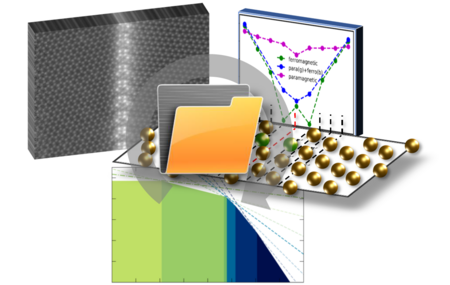
Since defect phase diagrams are a novel concept in materials science, only a limited amount of thermo-chemo-structural data is currently available. They need to attributed to certain defect types, defect characters and defect states. This Infrastructure Use Case (IUC04) aims to combine data in various formats and from multiple sources and re-use this data to construct defect phase diagrams and tailor material properties. The data can be searched based on the corresponding metadata in the research data management platform openBIS. As such, we develop tools and workflows to bring highly annotated data into the openBIS platform with minimal effort for the scientists. They can upload their data using a web-based companion app or using python packages. Thereby, metadata from the files are extracted automatically. Furthermore, the data itself can also be stored in an external object store (S3/Coscine) to have a scalable solution.
| Main requirements: - Workflows combining theoretical and experimental structural data of defects - Adaptive databases for high dimensional data structures containing sparse data - Visualization (of thermodynamic dataspace from microstructure, chemical or mechanical perspective) - Multiscale simulation (of multiphysics data) - Electronic lab book / LIMS (Laboratory Information Management System) (for defect data) |
| Mainly related to Task Areas: TA-WLE Other related Task Areas: TA-SAI |
| Possible connections within NFDI: NFDI4Ing, FAIRmat |
| Material/Data: - Ni-X solid solutions/intermetallics - Mg-X alloys - Thermodynamic and structural data of defects |
| Main Success Scenario: User can automatically generate defect phase diagrams, based on both experimental and simulation data, that can be used to predict the performance of materials |
| Added value for the MatWerk community: General framework of model-driven thermodynamic databases that combine computation and experiment |
This Infrastructure Use Case (IUC04) contributes to interoperability between experimental and simulated data sources and develops comprehensive workflows that integrate multiple analysis steps and data types. These include data representing defects at comparable length scales, such as high-resolution microscopy (TEM), atomistic or DFT simulations, and property measurements related to atomic-scale defects. All data are managed in the common system openBIS and combined to generate defect phase diagrams as research output. Experimental and simulation data can be uploaded via a dedicated companion app and Python parsers developed by PP02. The simulated atomistic data are partly generated using pyiron workflows, and a pyiron extension is available to upload these data. Both tools are based on Python packages to extract rich metadata and complement each other. The development of the pyiron extension is led by TA-WLE.
Software and Workflows
Demonstrator
NFDI-MatWerk
Funded by the Deutsche Forschungsgemeinschaft (DFG, German Research Foundation) under the National Research Data Infrastructure – NFDI 38/1 – project number 460247524.
NFDI-MatWerk
Funded by the Deutsche Forschungsgemeinschaft (DFG, German Research Foundation) under the National Research Data Infrastructure – NFDI 38/1 – project number 460247524.
Subscribe to our newsletter for regular updates about materials science topics!
After subscribing, you will receive an email from us with a confirmation
link.
Only after clicking this link your registration is completed.